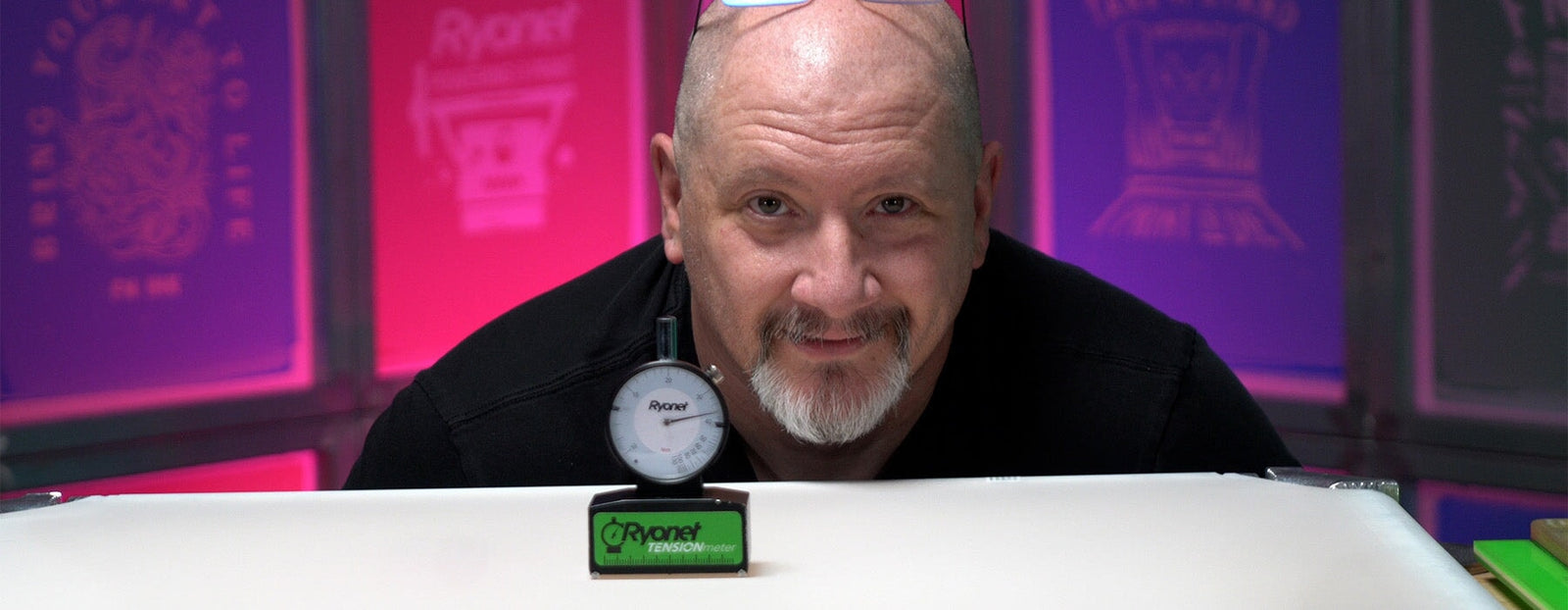Welcome Back to Another Deep Dive with Colin! One of the most common questions we hear from both new and experienced screen printers revolves around screen tension. Specifically, when is the tension too low? At what point should you retire a screen from your inventory? Whether you need to toss it, send it out for a re-stretch, or just buy a new one, the answer isn't as simple as throwing it out when it hits a certain number on the tension meter.
Today, we're diving deep into the nitty-gritty of screen tension, exploring what happens to your screen during the print process, and understanding how to judge when a screen has reached the end of its useful life.
UNDERSTANDING SCREEN TENSION
First off, what is screen tension? Screen tension refers to how tightly the mesh is stretched across your screen frame. High tension means the mesh is taut, while low tension means it’s slack, which can have a significant impact on your print quality.

When you pull a squeegee across a screen with low tension, not only does the mesh not want to snap off the ink quickly, causing rough prints, the mesh tends to shift, causing blurriness and misalignment in your print. This is why maintaining proper tension is crucial, especially for detailed and multi-color prints.
WHEN IS TENSION TOO LOW?
There's no one-size-fits-all answer, but here's a general rule of thumb:
- The screen must remain stable during printing: If the screen moves and the image distorts or elongates (registration marks do not line up correctly), the tension is too low and should not be used, especially in multicolor designs.
- The screen must snap off of or peel off of the print right behind the squeegee: If you are seeing the screen stick to the print/shirt, you will want to increase off contact. This will help with your functional off contact. If you end up creating too much off contact, if you are over 1/8th of an inch and approaching ¼ inch or more, replace the screen.
Every time you reclaim a screen or pull a squeegee, the tension drops slightly. Over time, this wear and tear can lead to significant tension loss.
RELATED: FUNCTIONAL OFF CONTACT | DEEP DIVE WITH COLIN
TENSION ACROSS DIFFERENT SCREEN TYPES
Different frames hold tension differently:
- Static Aluminum Frames: Common and dependable but lose tension over time without any way to adjust it.
- Eco Frames or Click Frames: Allow you to replace mesh panels when tension drops, maintaining print quality over time.
- Roller Frames: These are the high-performance machines of the screen printing world. You can adjust tension whenever you like, keeping your screens tight and your prints sharp.

PRACTICAL TIPS FOR MANAGING TENSION
- Use a Tension Meter: If you’re serious about maintaining print quality, investing in a tension meter is a smart move. It gives you an exact reading of your screen’s tension, helping you know when it’s time to take action.
- Sound Check: If you don’t have a tension meter, use the sound test. Tap the mesh; if it sounds like a bass drum, your tension is low. If it’s more like a snare drum, you’re in good shape.
- Off-Contact Adjustments: Increasing off-contact (the distance between the screen and the substrate) can help compensate for lower tension, but this is a temporary fix. If you find yourself needing to crank up the off-contact, it’s probably time to re-stretch or replace the screen.
FINAL THOUGHTS
Screen tension is the backbone of your printing process. If you notice your prints aren’t as sharp as they used to be, or if you’re struggling with registration, it might be time to check your screen tension. Remember, maintaining the right tension levels isn’t just about prolonging the life of your screens—it’s about ensuring every print you produce is of the highest quality.
Have a question you want Colin to Dive Deep on? Submit it here!

